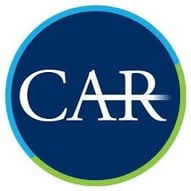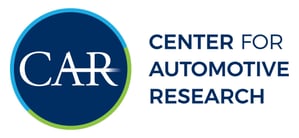
This past week there was a lot of exciting buzz surrounding air taxis and robotaxis and how they might impact the future of transportation. EV charging infrastructure and charging times were yet again hot topics in the news as automakers consider challenges ahead with consumer acceptance of EVs. Additionally, the used car market continues to be a struggle for both dealers and consumers. We are also monitoring growing concerns over pedestrian safety, given the recent report of 2020 pedestrian deaths.
As the microchip crisis continues to plague the automotive industry and beyond, we have migrated all news updates related to the shortage to our website. You can stay informed on the automotive impact of the global chip shortage by visiting here.
If you missed my previous Hot Topics email, you can read it here.
We would love to hear from you and welcome your questions at any time. If you're interested in sharing your thoughts with us on hot topics, or if you would like to ask us a research question, please reach out to Katie Ramsburgh.
We will be taking a break to celebrate the Fourth of July holiday, and Hot Topics will return on July 16. I wish you and your families a safe and sunny holiday.
Hot Topics of 6/14/2021 - 6/18/2021
Air Taxis and Robo Taxis
- Hyundai accelerates air taxi efforts, COO says
- GM-backed Cruise secures $5 billion credit line as it prepares to launch self-driving robotaxis
- Honda/GM startup launches its robo taxi service in demo mode
- American Airlines and Virgin Atlantic order electric air taxis from UK startup
- This New eVTOL Will Fly You From Downtown LA to the Beach in 8 Minutes—for the Cost of an Uber
- Flying Car Makers Want to Build 'Uber Meets Tesla in the Air’
My thoughts:
NASA has said for years that we won’t solve the congestion problem unless we go to the air. Being a Jetson’s fan as a youngster, I am thrilled to see this action taking place and want to try out one of these rides as soon as I can. We need to be very careful and not apply the same policies to the sky that we have on the roadways. If we aren’t careful, we will have the same unintended consequences.
Last week, you may recall that I talked about mobility equity. Robo taxis and ride-sharing services are potentially some of the best ways to make this happen. If we can eliminate all of the “expenses” to the driver, “expensive” downtime, and use data analytics to right size and right propulse the products, this will bring the cost of rides down to potentially a very affordable level. We will need to have several pilot programs to learn and hone the service. The nation's data infrastructure (broadband) is vital to the success of these programs to provide mobility to “data deserts.”
EV Charging Stations and Charging Times
- Automakers face a threat to EV sales: Slow charging times
- Will charging electric cars ever be as fast as pumping gas?
- Report: California needs 1.2 million EV chargers by 2030 to support vehicle targets
- 7-Eleven to install 500 EV charging ports by the end of 2022
- Why battery swapping may finally become a part of EV charging infrastructure in the U.S.
- Atlis Motors Produces EV Battery It Claims Recharges In Just 15 Minutes
My thoughts:
As we’ve heard from the marketplace for years, customers are not convinced that charging time will ever fit into their everyday driving needs. Continuous innovations are being worked on to increase the charging capacity and improve the time required. DC fast chargers are a great solution, but they are very expensive for the provider or owner.
The results of the Biden 100 days’ study recommended that dollars be invested for more battery research, including charging infrastructure. This research funding is greatly needed to engage the triple helix (academia, government, and industry) to find solutions to mitigate concerns about charging time.
We’ve already seen charging stations being located in places where the consumer tends to spend enough time that the charging time becomes a non-issue (shopping centers, restaurants, and more). I want to challenge the individual States to think differently about our rest areas and consider how we engage citizens with activities while they charge their product. How about a quick exercise class? A gym with weights, treadmills, and more. A place to order some food. Let’s think about “charging hubs” that make “waiting” a pleasant or worthwhile time investment.
Used Car Market
- Here’s Why The Average Vehicle On The Road Is Older Than Ever
- Average age of vehicles hits all-time high: Cars, trucks, SUVs getting older as used car prices soar
- Used-Car Prices Spiked 30% in Just One Year
- Why the used-car market is sending American inflation soaring
- Used Car Values Will Soon Crash... Buyers Brace For Impact
- More of Canada's used cars are flowing into U.S.
Kristin Dziczek, Senior Vice President of Research at CAR, weighs in on Canada’s flow of used cars into the U.S.:
“This is an issue because USMCA has not clarified the tariff treatment of used vehicles. The language says they have to meet USMCA standards, but if they were built prior to USMCA, the compliance documentation may not be available.”
My thoughts:
The used car market is thriving primarily due to low inventories and pent-up consumer demand for products. I tend to agree that this will be a short-lived problem once inventories begin to recover later this year. However, the cost of a new vehicle is making a new car unaffordable for average Americans, which may perpetuate the buying of used vehicles. So, we need to watch this carefully. The return to travel and the demand from rental car companies will only increase the pressure on car availability, and the price of both new and used vehicles may potentially continue to rise.
Economics will drive this situation in terms of supply and demand and then price. CAR will monitor and continue to advise on the levers that may cause new and used vehicle availability and price to fluctuate as a team.
Pedestrian Safety
- 'Mind-boggling': Pedestrian deaths surged in 2020, despite fewer cars on the road
- Pedestrian Deaths Increased 21% in 2020
- Chinese startup's AI-based system to analyze road conditions
- Watch now: Tulsa bicycling and pedestrian safety group tests protected intersection design, aims to reduce traffic fatalities
- The Hidden Danger of BIG Trucks
- Legislator Seeks Pedestrian-Safety Rating on SUVs and Trucks
My thoughts:
Interestingly, if you didn’t know it, Phoenix, AZ, has had the highest rate of pedestrian fatalities for many years. Why? The climate is right year-round for people to utilize walking to get around the city, and many choose to do so. During the pandemic, getting outside for exercise was recommended, and public transit virtually stopped for a while. In addition, we know our drivers are more distracted than ever and driving faster than ever. More walking and more distraction + speed lead to this very painful outcome.
Urban planning needs to wake up to the mobility ecosystem and provide safe paths for all transit modes to co-exist. Beyond this, our driver’s training programs need to focus an entire session on being observant of vulnerable road users – absent in today’s programs. When I lived in Japan, I went to driver’s training and spent an entire day on the roads learning about where people will jump in front of you on foot or bicycles and to always be prepared for pedestrian behavior. Distraction was never an issue when driving in these multi-modal environments.
We can do better in 3 ways: 1) better driver training, 2) improved Urban Planning, 3) improved use of technology to communicate to drivers and pedestrians about impending danger or situations. I’m sure there are more ways, but this would be a start. Let’s make everyone feel safe and trust that they commute in a way that works for them.
.jpg?width=100&name=Bailo-2%20(2).jpg) Best Regards,
Best Regards,
Carla Bailo
President and CEO
Center for Automotive Research
Don't miss this critical conversation:
Future Connectivity & In-Vehicle Cybersecurity: Know Your Rights
Tuesday, June 29, 2021 | 7:00 AM & 1:00 PM ET
Connected vehicles and their associated ecosystems are becoming dominant in creating a safer and more comfortable driving experience. All those benefits come at the price of increased risks for cybersecurity attacks threatening the safety, reliability, and privacy of passengers and the world at large.
Industry professionals lead the effort to prevent hackers from inflicting damages to people and the transportation system. Global and national regulations require OEMs to comply with cybersecurity standards for their cars to gain the required certification to safely move on the roads.
During this session, as an example, we shall take a practical approach showcasing cyber threats to the connected infotainment system and present cyber defense methods that provide adequate protection and meet the required standard's compliance.
This webinar will air twice on June 29, 2021, with live Q&A for each session. The first airing will take place at 7:00 AM ET, and the second airing will take place at 1:00 PM ET. Please use the button below to register for your preferred time.














